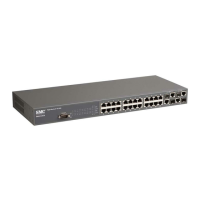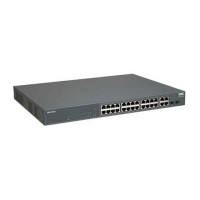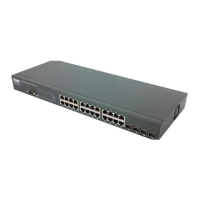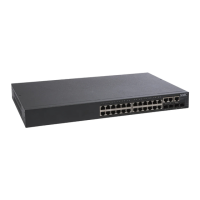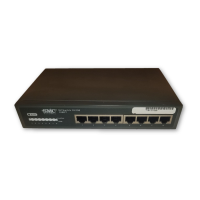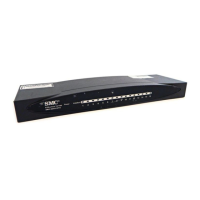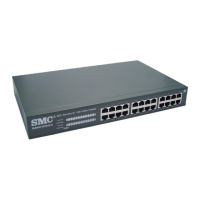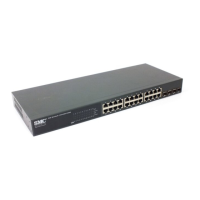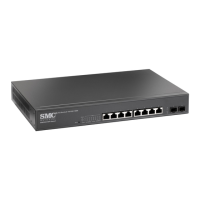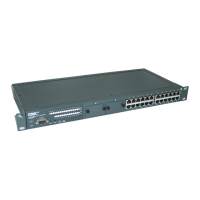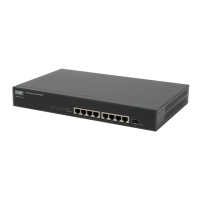S
PANNING
T
REE
A
LGORITHM
10-8
Configuring Global Settings
Global settings apply to the entire switch.
Command Usage
• Spanning Tree Protocol
9
Uses RSTP for the internal state machine, but sends only 802.1D
BPDUs. This creates one spanning tree instance for the entire network.
If multiple VLANs are implemented on a network, the path between
specific VLAN members may be inadvertently disabled to prevent
network loops, thus isolating group members. When operating multiple
VLANs, we recommend selecting the MSTP option.
• Rapid Spanning Tree Protocol
9
RSTP supports connections to either STP or RSTP nodes by monitoring
the incoming protocol messages and dynamically adjusting the type of
protocol messages the RSTP node transmits, as described below:
- STP Mode – If the switch receives an 802.1D BPDU (i.e., STP
BPDU) after a port’s migration delay timer expires, the switch
assumes it is connected to an 802.1D bridge and starts using only
802.1D BPDUs.
- RSTP Mode – If RSTP is using 802.1D BPDUs on a port and receives
an RSTP BPDU after the migration delay expires, RSTP restarts the
migration delay timer and begins using RSTP BPDUs on that port.
• Multiple Spanning Tree Protocol
- To allow multiple spanning trees to operate over the network, you
must configure a related set of bridges with the same MSTP
configuration, allowing them to participate in a specific set of
spanning tree instances.
- A spanning tree instance can exist only on bridges that have
compatible VLAN instance assignments.
9. STP and RSTP BPDUs are transmitted as untagged frames, and will cross any VLAN
boundaries.
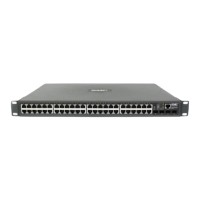
